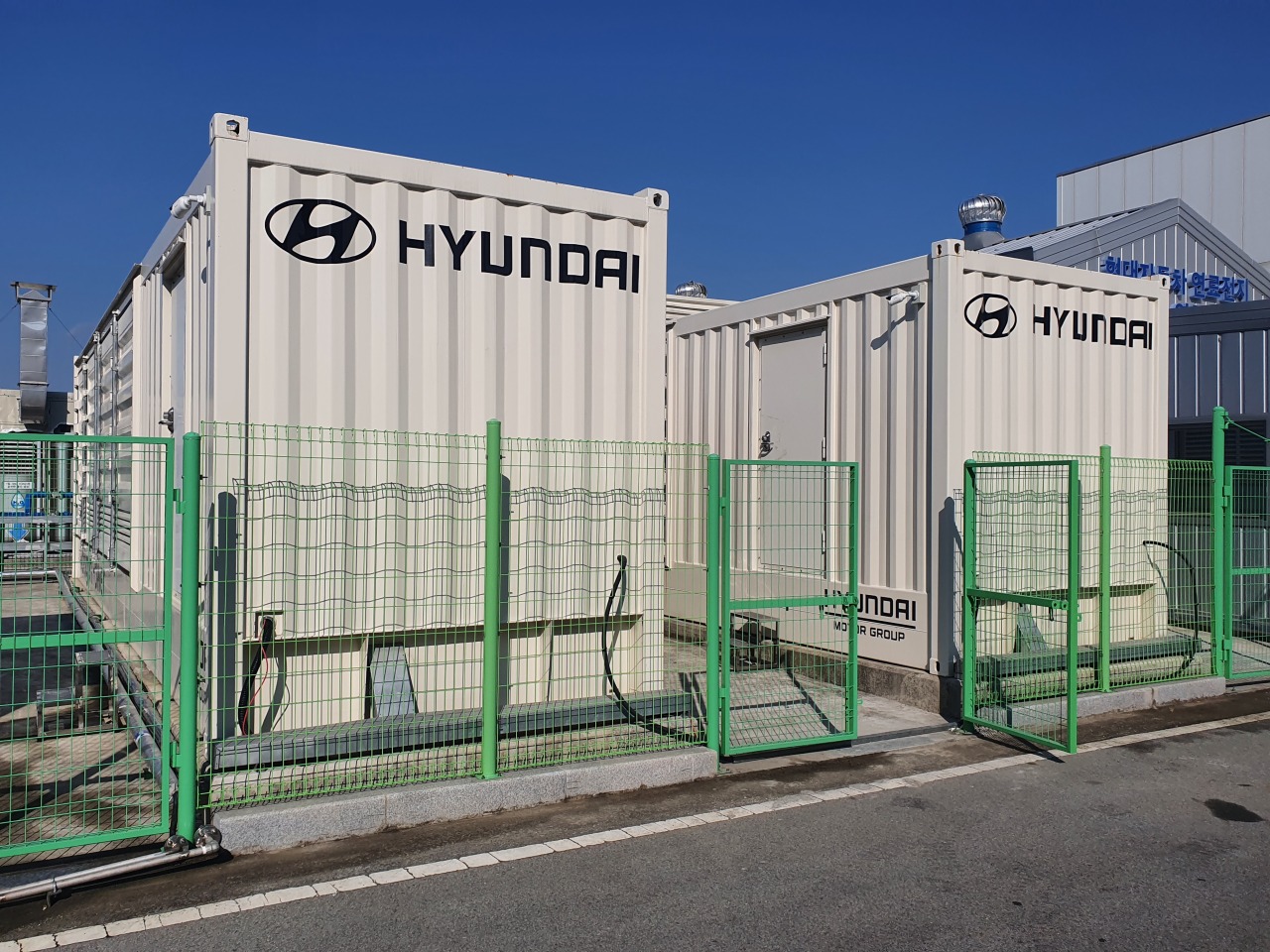 |
Hyundai Motor’s hydrogen fuel cells are tested at the feasibility center of the Energy Technology Support Agency in Ulsan on Friday. (Kim Byung-wook/The Korea Herald) |
ULSAN -- A city the size of Hong Kong churns out 5,400 cars every day, builds 12 percent of the world’s ships and runs Asia’s third-largest petrochemicals complex.
It’s no surprise that Ulsan has the highest carbon emissions per person in South Korea.
The port city, sitting on the southeast coast of the Korean Peninsula, aims to turn its weakness into a strength by collecting massive waste hydrogen generated at petrochemical facilities and using it as a fuel to power the city.
During a press tour Friday, dozens of reporters were introduced to an outdoor facility at Ulsan Technopark. On the gray cement floor of the site -- which resembled a trailer park -- sat five steel containers painted white.
At the visually uninspiring scene, reporters seemed almost disappointed, but at the mention of Hyundai Motor, they switched on.
“These are the hydrogen fuel cells of Hyundai Motor and Doosan Fuel Cell. We are testing whether Hyundai Motor’s fuel cells for cars can also be used for power generation,” said Jo Seung-hwan, a senior researcher at the Energy Technology Support Agency, a research body running the feasibility center.
“These fuel cells are generating electricity with waste hydrogen sourced through a 2.5-kilometer underground pipeline connected to a nearby petrochemical facility,” added Jo, explaining that based on the 7.6 billion-won ($6.4 million) project, Ulsan will expand its underground hydrogen pipeline network at full throttle.
According to Woo Hang-soo, director at the Energy Technology Support Agency, Ulsan has completed the design of an underground hydrogen pipeline that connects Hyundai Motor’s car factory and Hyundai Heavy Industries’ shipyard.
Through a 10-kilometer pipeline, a petrochemicals complex will be connected to Hyundai Motor’s Ulsan plant No. 5, where the Nexo hydrogen SUV is manufactured. From there, a 4-kilometer pipeline will extend to HHI’s shipyard to the east.
“When Hyundai Motor’s Nexo comes out of the factory, its tank is empty. Hyundai Motor will fill it up with the waste hydrogen supplied from the pipeline,” Woo said.
Currently, a hydrogen trailer drops by Hyundai Motor’s Nexo factory every 30 minutes to 1 hour to supply hydrogen.
“Meanwhile, HHI will use the waste hydrogen as a fuel for ships in the future.”
Ulsan will break ground on the pipeline network next year and take ownership of it.
By Kim Byung-wook (
kbw@heraldcorp.com)








![[Today’s K-pop] Blackpink’s Jennie, Lisa invited to Coachella as solo acts](http://res.heraldm.com/phpwas/restmb_idxmake.php?idx=644&simg=/content/image/2024/11/21/20241121050099_0.jpg)